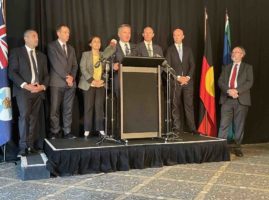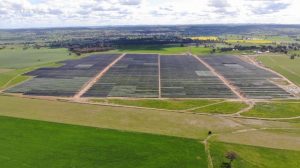A new market for trading available network capacity could be vital to limiting the impacts of curtailment, and connection delays for future wind and solar projects, the Clean Energy Council has suggested in response to a proposed overhaul of transmission network access.
While a lot of recent attention has focused on the controversial addition of a capacity mechanism to the National Electricity Market, the Energy Security Board is also considering overhauling how new projects can connect to the grid and who bears the cost burden of new network infrastructure.
In a proposed redesign of electricity markets, the ESB had recommended creating a ‘congestion management model’ that would impose charges on new generators, reflecting the level of network congestion in the part of the grid where they connect.
The ESB said the mechanism could provide a financial incentive for project developers to avoid the overbuilding of generation capacity in overloaded parts of the grid, causing projects to have their output curtailed or their network connection delayed.
But the ESB shelved the proposal after fears from wind and solar developers that the congestion management model would see new projects lumped with significant new costs – particularly if they are unable to participate in the Renewable Energy Zones being established by state governments.
In a submission to the Energy Security Board, the Clean Energy Council says the ESB needs to get the transmission access reforms right, as they could be just as influential on the development of Australia’s future grid as the capacity mechanism.
The Clean Energy Council proposes an alternative ‘Congestion Relief Market’ (CRM) that could optimise the use of available network capacity by enabling generators to trade network access.
“This is really about designing a new market that allows generators and storage to trade with each other to find the lowest cost way of using the available network,” says the Clean Energy Council’s director of energy transformation, Christiaan Zuur.
“A CRM would provide generators and storage with new revenue streams, which will help bring on the additional investment in both that is so desperately needed.
“If we get this right, it means that instead of trying to push more power down the wires, a wind farm may choose to trade that power to charge a battery close by, which can choose to buy that power at a price that works for both parties.
“The wind farm makes some money, congestion is avoided on the transmission line and the battery makes money by selling the energy back when there’s less congestion. Ultimately, this results in a more efficient, lower-cost system which means cheaper electricity for consumers.”
The CEC says it is essential that the Energy Security Board strikes a balance on transmission access to ensure new projects avoid additional barriers to connecting to the grid while protecting existing projects from the difficulties caused by network congestion.
“The challenge for access reform is getting the balance right between providing existing generators with certainty while also encouraging investment in new generation,” Zuur said.
“We desperately need new renewable and storage investment, but this isn’t much help if those new assets can’t get their power to market.
“We need to strike a balance between bringing on new renewable investment and protecting existing renewable generators’ ability to get their power onto the grid – many of which are already facing negative economic outcomes due to congestion.”
The Clean Energy Council also calls for the standardisation of information shared between generators, network companies and market regulators to improve energy system planning.
“Improving information flows is key to unlocking the full potential of the many existing reforms that have already been developed,” said Zuur.
“It will enable frameworks such as the Integrated System Plan and the new system strength frameworks to be more effectively coordinated with market investor decisions. This will drive lower-cost outcomes for consumers in the medium to long term.”
Several wind and solar projects have faced delays in connecting to the grid or faced curtailment once connected, as investment in network capacity has lagged behind the rapid pace of growth generation capacity.
The resulting uncertainty around future grid investment has consistently ranked as one of the top concerns for project developers.
The Clean Energy Council says regulators need to establish a “more dynamic” approach to commissioning new network infrastructure, to enable the transition to cleaner energy sources already underway.
“Clearly, Australia needs to accelerate its investment in new transmission – something the new Federal Government has committed to through its signature Rewiring the Nation fund – to ensure the grid is fit-for-purpose,” Zuur says.
“There is additional network bandwidth to support more distributed renewable energy generation and the power can be dispatched to customers across the nation. But no matter how much new transmission is built, there will always be some level of congestion on the network.”










